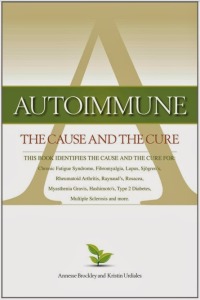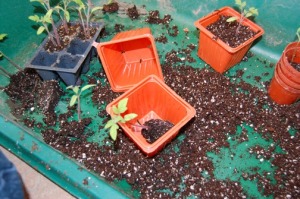This is me, on a rant. We, as a country, have killed our food. And in the process, we are killing ourselves.

This chart is up-side-down!
Since Americans have been following advice given (and sometimes laws made) by the FDA, DOA and the medical and scientific communities such as the American Cancer Society, American Heart Association, etc., there has been a drastic increase in obesity, cancer, autoimmune disease, heart disease and dementia in America, just to name a few. As of 2004 almost half of all Americans suffer from chronic conditions, children as well as adults. Before 1920, heart disease was rare in the US. Now it’s the leading cause (40%) of death. During that time period, the consumption of animal fats and meats declined while the consumption of vegetable oils in the forms of margarine and shortening, and sugar and processed foods rose 60%. (NT pg. 5) Other cultures around the world that have adopted our “western” diet have seen the same decline in their health, while remote people that retain their native traditional diets remain healthy: no chronic diseases, dental decay or mental illness. (NT preface)

Rosie wasn’t the only riveter!
I’m not sure just how things went so far south as to how we handle and relate to our most elementary need: sustenance. Some people say it started when we went from hunter/gatherers to farmer/agriculture/manufacturing. Some people blame the WWII and then the women’s liberation movement for creating changes in women’s roles: going from the family food preparer, housekeeper and caregiver to the working women who were in desperate need of conveniences to help them juggle work, home and family. However it happened, I don’t like it.
We’ve given away our power by trusting doctors, government (FDA and DOA), pharmaceutical companies, cereal companies, dog food companies, soda companies, energy drink companies, etc. as they tell us what we should eat, what we should do and what we should take to be healthy. We don’t even question them—we believe they are there to protect us, by law. We have given away our power, period. We don’t research how pharma companies pay for studies to make their products look safe, how they wine and dine medical professionals and have their check books deep into medical schools, how dog food companies and pet pharmas pay for vets’ education, continuing education and more. We don’t realize how many studies are faulty, slanted or flat-out falsified.

These are “cageless” chickens!
How factory farmed food animals (FFFA) are mistreated, abused and genetically altered to make the biggest profits, given antibiotics to compensate for their compromised immune systems from overcrowded living conditions, fed by-products from other industries because they’re cheap and easy to get and fatten animals up quickly.
We rarely think about how we eat what we eat eats. Read that slowly, it does make sense. Really. All the unnatural foods fed to FFFAs end up in their meat, which we consume. FFFAs have a serious imbalance in Omega 3’s because they’re not eating the pasture grasses for which their bodies were designed. That’s why everyone is gulping down Omega 3 fish oil capsules! But then, where do those capsules come from? If it’s farmed fish, they too are being fed garbage. Soy, corn meal, chicken and pig feces (yes really), canola oil, dyes, arsenic and… antibiotics. With loads of PCB and other chemicals thrown in just for fun. And really, do any of us want animals of any kind to suffer?

Think you can wash pesticides off?
I’m not just talking about animals. Vegetable, nut, fruit, grain and fruit farms are being over-farmed due to zero crop rotation. The soils become deficient in vitamins, minerals, healthy bacteria and nutrients— and so are the crops they produce. To make up for the lack of nutrients in soil, they are being sprayed with chemical fertilizers. Don’t get me started on Monsanto, but they are genetically modifying seeds (GMOs) so they are “Roundup ready.” You know Roundup, the stuff you spray on weeds and “they won’t come back?” Well, weeds become a problem on farms as well, competing with the food crops for water, space and nutrition. The quickest, cheapest and easiest way to deal with them is to spray with Roundup. The genetically modified plants can withstand the barrage of herbicides while the weeds die. The food plants soak up Roundup like Kool-Aid. Think that stuff can be washed off? Then they sell you more chemicals in a spray bottle to “wash off” the pesticides. Right. So once again we’re eating foods that are nutritionally deficient and loaded with poisonous chemicals. Yum.

Not just potatoes–click image.
And then there’s the dry and canned convenience foods. Ever read the labels? All the nutrients have been removed by processing, sterilizing and preserving. Any of the “good” bacteria found in raw milk and milk products, pickled foods and preserved foods have been killed off by heat processing and chemical preservatives. That’s why there are so many of those probiotic commercials! Food in boxes comes with labels almost completely written in chemistry. No more MSG? Look again, it’s been renamed to hydrolyzed protein, just one of 50 names to throw us off the trail. Loads of flavor enhancers and lab-created vitamins to make up for dead food, preservatives to keep an infinite shelf-life (but they add expiration dates so we will throw out unused products and buy more).

Read this enlightening book!
Is it any wonder that people are sicker than ever? More cancer, more autoimmune diseases, more allergies, asthma, GI problems, heart disease, gluten intolerance, mystery illnesses.
I say, let’s take back our power! Here are just a few ways we can step back from the commercial food industry and get back to what’s real, natural and healthy. Don’t feel overwhelmed — take one step at a time. Our bodies have done an amazing job surviving despite what we expose them to, but it’s just a matter of time. Although, if you’re already suffering from any sort of chronic illness, your body is telling you NOW is the time for a change. It IS possible to stop illnesses that have already begun, and recover as well. I’ve seen it myself. If you want to learn more, read Autoimmune Disease, The Cause and The Cure by Annesse Brockley and Kristin Urdiales. Even if you don’t suffer from an autoimmune disease per se, the detailed information in this book will explain a lot of what’s going on in your body and WHY.
Take your power back — Ten easy ways to get started!
1. Read labels. Try to get an idea of what’s in the food you’re buying and what it will do to your body. Many of the chemicals found in personal care products, laundry products, air fresheners and household cleaners are known carcinogens. (AI, pg 196) Environmental Working Group ranks over 15,000 brand-name products and has loads of information on what’s in other things we are exposed to or consume.
2. Buy good quality water filters. Fluoride and chlorine/dioxins are in our water supplies and many products. Don’t forget we are bathing in this same water and absorbing the chemicals through our skin. Fluoride is a by-product of cement, metals and nuclear weapon manufacturing and used as a rat and cockroach poison. It has been proven that fluoride does not strengthen teeth; just the opposite in fact. Chlorine/dioxin is a pesticide linked to various cancers, heart disease, miscarriage and birth defects. (Info from pg. 183, Autoimmune book, see link below.)
3. Get educated. Read more books like Nourishing Traditions (a cook book but first and foremost a WEALTH of information) and Autoimmune Disease, The Cause and The Cure. Follow Annesse and Kristin on Facebook, they are always updating with new information and responding to people’s questions. Join the Weston Price Foundation and subscribe to the newsletter. Watch some YouTube videos by Dr. Ken Berry and buy his book.

Natural only means it’s not from another planet.
4. Know where your food is coming from! Again, read labels. Is it organic, certified organic or “natural.” Any GMOs? Are the chickens “cage free” or “free range?” Terminology regarding food can be deliberately misleading. Is the meat pastured and grass finished? Learn the differences and how truthful agriculture really has to be under our lenient and misleading labeling laws. Pay more attention to the way your food is being raised and processed. You’ll be eating what they eat, animal or plant. The ideal solution would be buy from local farmers and see their farming and animal treatment practices in person. There are resources on the internet for finding raw milk, organic produce and pasture-fed animals.
5. Be willing to spend more money on organic fruits and vegetables, grass-fed free-range meats, dairy and eggs. You can start gradually. It is SO worth it. And pay attention to grass-fed meats vs. grass-finished. Ranchers will finish cattle and other animals off in feed lots being fed garbage to fatten them up before going to market, which drops the quality of the meats. Don’t be fooled by that, you want pasture-raised, pasture-FINISHED meats.

Indoor tomatoes!
6. Start a garden. I realize it’s not possible under all situations, but you can even start small and grow herbs indoors and tomatoes and other patio vegetables in planters on a porch or balcony. I currently have a potted garden in my second story guest bedroom and it’s doing great!
A lot of neighborhoods have community gardens where for a small fee you get a little plot of land and can spend time tilling the earth, getting close to nature and meeting new friends.
Another way would be to volunteer at a local organic farm and get fresh, healthy food for trade.
7. Question authority. Is there a special interest group (soy growers, corn growers, sugar growers, pork growers “the other white meat”, high profit industries, chemical manufacturers, ad nauseam, their marketing budgets and lobbyists) behind what you’re being told? Honestly, no one is interested in taking care of you and your health other than you and possibly your family and friends. If there’s a profit involved, you can be assured there’s corruption, deceit and greed. No, I’m not a conspiracy theorist. I just read a lot.
8. Take up a new hobby such as canning your own foods (or foods from farmers’ markets), culturing vegetables and dairy, cooking more meals from scratch. Get the whole family involved. It’s so easy to make your own salad dressings (and mixes), rice seasonings, sauces and gravies, marinades and rubs, mashed potatoes and more from wholesome and organic herbs, meats and vegetables.
9. Research cooking oil options, butter and animals fats—I guarantee you’ll dump the vegetable oils in a heartbeat.
10. Ditch the cans of soup, stews and chili. If you’re making soup, stew or chili, make some extra and freeze it in freezer-safe canning jars. Stay away from processed foods, avoid all canned food (as in cans, glass jars are better) and opt for frozen foods at the very least. As far as fruits and vegetables go, the frozen ones were frozen at their peak of ripeness and have not been heat processed to death. Check for preservatives!

Why don’t we listen to him?
11. Learn the truth about chemically manufactured table salt vs. sea salt, what’s wrong with boxed cereals, crackers, MSG, raw vs. pasteurized milk, margarine vs. butter. I could go on and on. Here’s a paper written by the Nourishing Traditions author Sally Fallon to get you started, Dirty Secrets of the Food Processing Industry. It will shock and disgust you when you read about what we have been unknowingly eating, and it’s just the tip of the iceberg.
Our food has ceased be safe and nutritious as commercial food providers have slowly seduced us into being dependent on them. I’ve learned so much about how we’ve learned to trust industry and government agencies, pharmaceutical and agricultural interests, thinking that they know what’s good for our bodies. We’ve been taught that we should fear handling food prep ourselves because of all the things that can “go wrong” when a layperson tries to grow, preserve and even cook their own food!
Don’t let this nonsense continue! Step up to the plate 🙂 and take the time to feed yourself and your loved ones properly. To quote Sally Fallon, author of the Dirty Secrets article mentioned above:
“To be healthy, we need to prepare our own food, for ourselves and our families. This doesn’t mean you have to spend hours in the kitchen, but you do need to spend some time there, preparing food with wisdom and love. If no one in the family has time to prepare food, you need to sit down and rethink how you are spending your time, because this is the only way to get nourishing foods into your kitchen. We can return to good eating practices one mouth at a time, one meal at a time, by preparing own own food and preparing it properly.”
 A big part of raising vegetables from seed is upsizing the pots they live in until they make it out to the garden. For most vegetables the process is straight-forward: carefully pop the plants out of their outgrown container into a slightly larger one, add dirt and water. You don’t want to go too much bigger with the new container because the plants will spend all their time growing roots to fill all that dirt and not growing the actual plant. Most plants will only need to be repotted once before going outdoors. But tomato plants (and sometimes peppers) may take several transplants before they reach the garden. Especially if your growing season is short: You want the biggest plants possible going into the ground on your last frost date.
A big part of raising vegetables from seed is upsizing the pots they live in until they make it out to the garden. For most vegetables the process is straight-forward: carefully pop the plants out of their outgrown container into a slightly larger one, add dirt and water. You don’t want to go too much bigger with the new container because the plants will spend all their time growing roots to fill all that dirt and not growing the actual plant. Most plants will only need to be repotted once before going outdoors. But tomato plants (and sometimes peppers) may take several transplants before they reach the garden. Especially if your growing season is short: You want the biggest plants possible going into the ground on your last frost date. Another thing I learned is that because of this rooting ability, tomatoes don’t seem to mind having their roots disturbed when transplanting. With other plants you have to be extremely careful to not injure the roots and with some vegetables you need to plant the seeds directly into your garden soil because they won’t tolerate transplanting at all. Not tomatoes!
Another thing I learned is that because of this rooting ability, tomatoes don’t seem to mind having their roots disturbed when transplanting. With other plants you have to be extremely careful to not injure the roots and with some vegetables you need to plant the seeds directly into your garden soil because they won’t tolerate transplanting at all. Not tomatoes!













